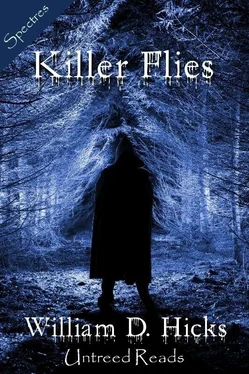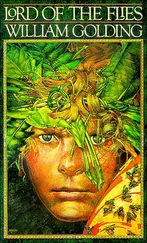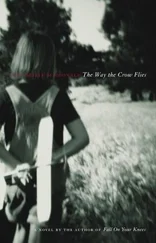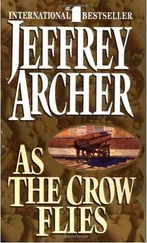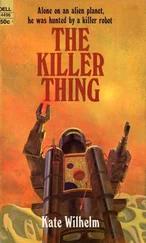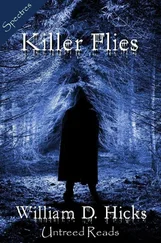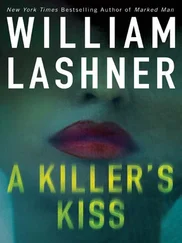William Hicks - Killer Flies
Здесь есть возможность читать онлайн «William Hicks - Killer Flies» весь текст электронной книги совершенно бесплатно (целиком полную версию без сокращений). В некоторых случаях можно слушать аудио, скачать через торрент в формате fb2 и присутствует краткое содержание. Жанр: Триллер, на английском языке. Описание произведения, (предисловие) а так же отзывы посетителей доступны на портале библиотеки ЛибКат.
- Название:Killer Flies
- Автор:
- Жанр:
- Год:неизвестен
- ISBN:нет данных
- Рейтинг книги:5 / 5. Голосов: 1
-
Избранное:Добавить в избранное
- Отзывы:
-
Ваша оценка:
- 100
- 1
- 2
- 3
- 4
- 5
Killer Flies: краткое содержание, описание и аннотация
Предлагаем к чтению аннотацию, описание, краткое содержание или предисловие (зависит от того, что написал сам автор книги «Killer Flies»). Если вы не нашли необходимую информацию о книге — напишите в комментариях, мы постараемся отыскать её.
Killer Flies — читать онлайн бесплатно полную книгу (весь текст) целиком
Ниже представлен текст книги, разбитый по страницам. Система сохранения места последней прочитанной страницы, позволяет с удобством читать онлайн бесплатно книгу «Killer Flies», без необходимости каждый раз заново искать на чём Вы остановились. Поставьте закладку, и сможете в любой момент перейти на страницу, на которой закончили чтение.
Интервал:
Закладка:
William D. Hicks
Killer Flies
Flies swarmed in the clear acrylic cage before Dr. John Pankow. They buzzed a loud rhythmic hum that was mesmerizingly maniacal. Fast and furiously they flew about their prison, so fast it was likely impossible to hit one with a fly swatter unless one got extremely lucky. The containers housing them looked to be formidable barriers to escape with interlocking rooms between them.
When set free inside an adjoining cage that housed a mare their buzzing became even louder.
Observers watched as the mare produced a bowel movement out of fear. The flies ate the excrement within seconds.
“Flies usually don’t eat this fast, but these are no ordinary insects. They are genetically engineered for warfare: If a soldier bleeds, even a pin prick, these flies are attracted to the pheromones in his blood, and they attack.” Pankow paused to see his viewers’ faces. Satisfied they were in awe, he continued. “Flies are normally rather docile creatures, fleeing when swatted at due to anomalous air currents. These killer flies, however, don’t fly away, they just keep coming.”
The mare released its bowels again. Within seconds the steaming pile of brown dissolved into microbe-sized specks on the green grass. Next the flies attacked the animal. She bit at herself, ripping at fur and flesh in an attempt to kill the flies, but they were too fast, too frenzied.
“These flies were named due to similarities with killer bees,” Pankow continued, looking away from the re-created pasture scene. “Their only purpose is to feed. Most important-they attack and often kill their prey.”
“Regular flies bite people once in awhile, but killer flies bite people hundreds of times a minute, releasing small amounts of venom each time, and removing small pieces of flesh. A single bite does little, but thousands are deadly. When blood or feces are involved killer flies triple their feeding rate. It only takes a few minutes to kill a man, seven to consume his remains. The remaining bones resemble medical school skeletons without any tissue. Remains often lay in gruesome contorted positions on the ground, some in twisted, agonized, warding-off postures, due to the pain of death. We discovered this during our animal experiments.”
Pankow looked back at the horse, which was bucking now.
Long brown mane soon became a crimson dish towel, dripping blood. She bucked, screamed in pain-a loud piercing sound-all to no avail. Fear streamed from her eyes as tears ran down her cheeks. She emitted a high-pitched “Neahhh!!!” laced with anguish. Bald spots appeared all over her body. Raw skin became muscle. The horse fell, its breaking legs cracked like a pistol report. “Neahhhhh!!!!!” she screamed as she rolled onto one side. The insects continued devouring her flesh. Finally the once beautiful chestnut mare stopped moving. Bones were all that remained.
The demonstration was over. It would stick in the observers’ minds forever. Pankow was sure of that.
“The point is the killer flies are too difficult to effectively control. Protective suits and heavy-duty insecticides work in a controlled setting, but nonmilitary personnel don’t own these things,” Pankow continued. “And chemicals are only so effective, plus they kill good insects as well as bad. And they harm important plant life.”
“Someday these flies will escape captivity.” Pankow’s voice rose to make his point. “That is why it would be prudent to destroy this species now.” While he hated the thought of an insect extinction, he hoped the government would scrap this project.
“Do all the research scientists feel this way?” General Bider asked.
Pankow didn’t want to answer that loaded question with a one-word answer. That answer was no, but the reasons varied among his colleagues. “Not everyone,” was his veiled attempt at hiding the truth.”
“How can you be sure these flies pose any threat to man if you’re only doing animal tests?” General Thomason asked.
“It’s true we haven’t used live human subjects as part of these experiments. Animals were used. But we did test this on abandoned corpses. Invisible people. No family, no friends, no questions. The controversy and scrutiny resulting from anyone finding out about our experiments was deemed unacceptable. So the corpses came from morgues all over the country with little likelihood of family connections. And the results were more dramatic.
“Is that what makes you believe we should stop work on this new weapon?” General Bider asked.
Pankow hated it when they used that term. “Some of our testing included the use of human blood and tissue. It contains certain pheromones. Our main problem was in controlling the killer flies. The military’s idea was to use the flies on the enemy, not on American soldiers. How this could be accomplished was a major hurdle because people excrete the same pheromones.”
“So we struggled to learn how to control the flies. At first we tried using different foods. The theory was if an American soldier ate garlic, or onions, these odors might mask the pheromone scent. Flies eat feces, so we expected they might not be thwarted by the foods with strong odors. Still it took two full years to prove this.”
Laughter filled the room.
Pankow continued, “No food scents were found to prevent attacks. So we moved onto other ideas. One plausible suggestion was to abandon bleeding soldiers, like sacrificial lambs, then move battalions away allowing the flies to feed on the wounded, which meant leaving men behind with mere flesh wounds and scratches. We rejected this idea.”
“Why?” General Donner asked.
Pankow looked at the sixty-year-old man quizzically. Either he was stupid or dense.
“Could you imagine the outcry?” General Willard answered.
“Oh,” General Donner responded.
“Another solution called for cauterizing wounds. But this would produce visible scarring. The army rejected this as too extreme, especially after recent Agent Orange incidents,” Pankow said, tired of explaining, but certain it would help his mission to end the project and destroy the flies. He rubbed his eyes; he had stayed up all night trying to make his demonstration understandable for laypeople, trying to anticipate all the questions.
“One research finally suggested using female fly pheromones. This worked for awhile. Much longer than any of our other ideas. It took several months of adjustments, but the female pheromone antidote finally proved effective on chimps. It worked for three months. That was enough to convince my team we needed human subjects, so we got a few soldiers to sign waivers for the vaccine tests. But human tissue proved incapable of sustaining fly pheromones for that length of time. People sweated it through their pores after a mere twenty days.” Pankow held down the yawn that wanted to escape. “If a soldier injected with the female pheromones remained in contact with the flies much longer he became part of their feeding frenzy, like a bloody carcass in a shark tank.”
“So, you created a vaccine?” General Donner asked.
“Yes, but its effectiveness is only twenty days, or less, depending on metabolic rate. Plus upon further testing this treatment doesn’t work on everyone.”
“Any more questions before I continue?” Pankow waited, no one’s hand went up. “Even though many of my colleagues see little harm in allowing the mix of killer flies with general house flies, I disagree. Currently interbreeding appears safe, because few can survive alone, and without ‘mothers,’ as we call the females, they can’t multiply. But that doesn’t prevent these flies from mutating and forming a new lethal strain. And this would be even more likely if one of the mothers escapes.”
Читать дальшеИнтервал:
Закладка:
Похожие книги на «Killer Flies»
Представляем Вашему вниманию похожие книги на «Killer Flies» списком для выбора. Мы отобрали схожую по названию и смыслу литературу в надежде предоставить читателям больше вариантов отыскать новые, интересные, ещё непрочитанные произведения.
Обсуждение, отзывы о книге «Killer Flies» и просто собственные мнения читателей. Оставьте ваши комментарии, напишите, что Вы думаете о произведении, его смысле или главных героях. Укажите что конкретно понравилось, а что нет, и почему Вы так считаете.
